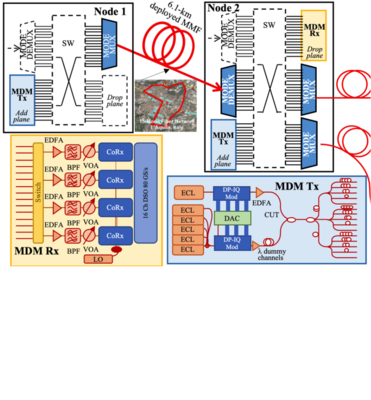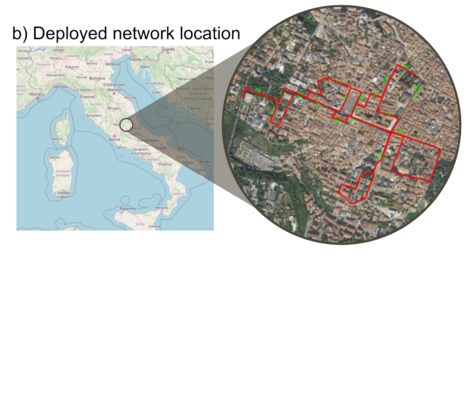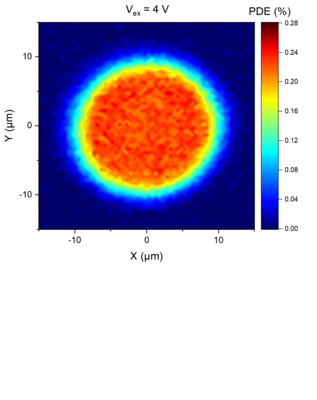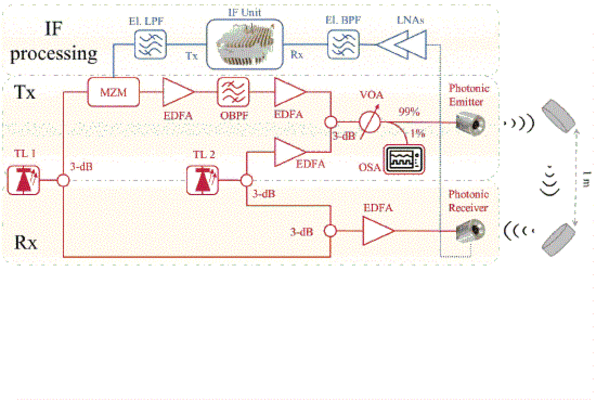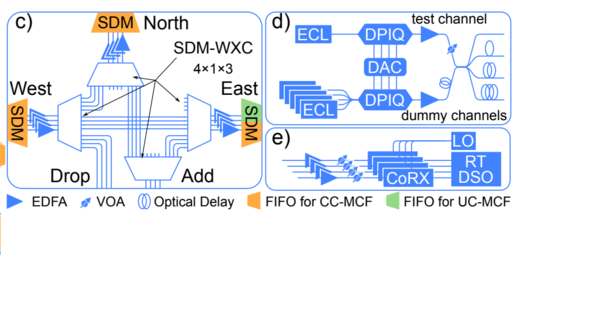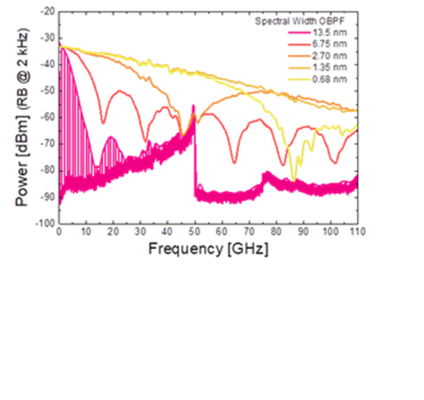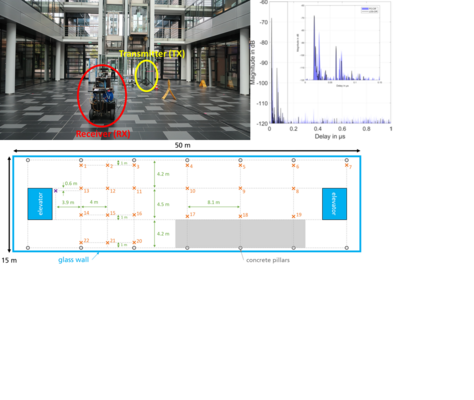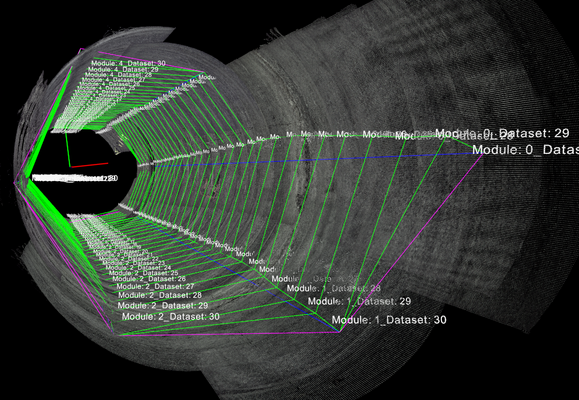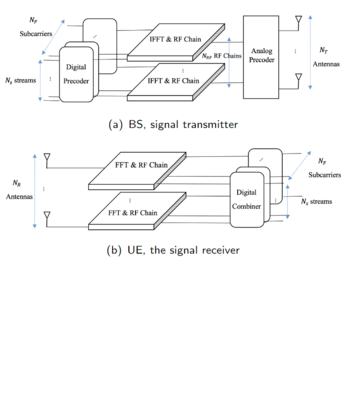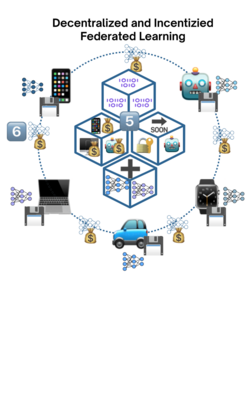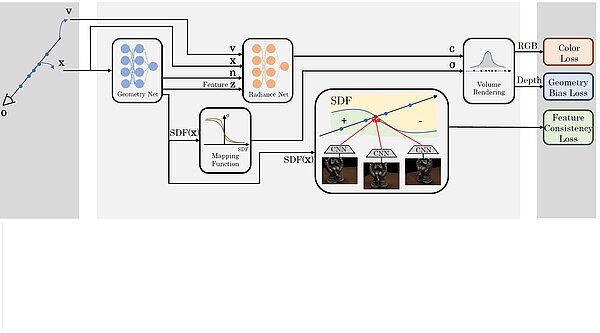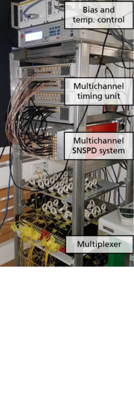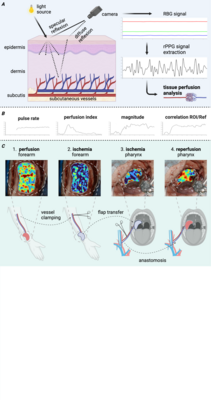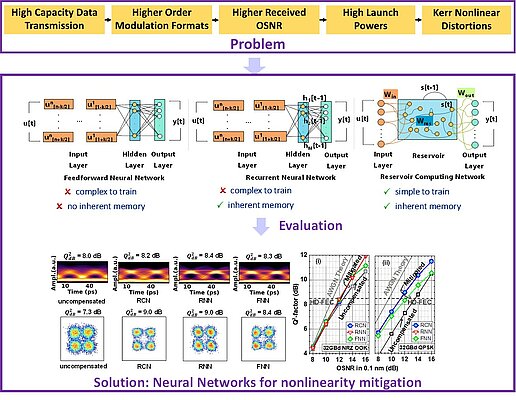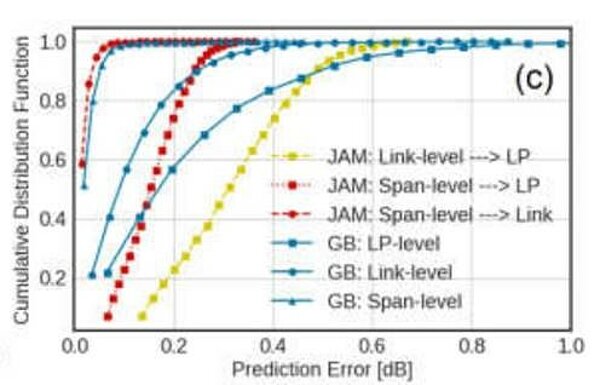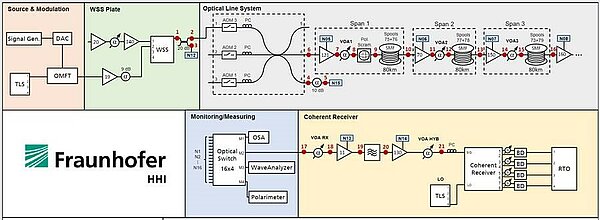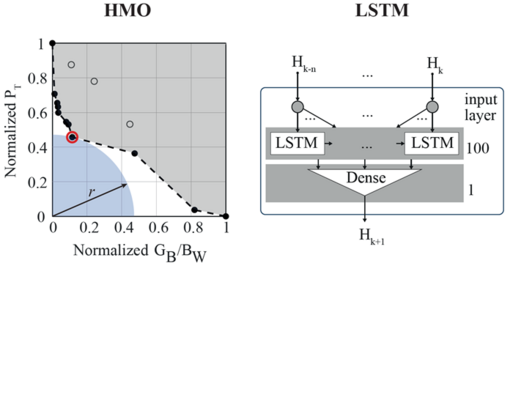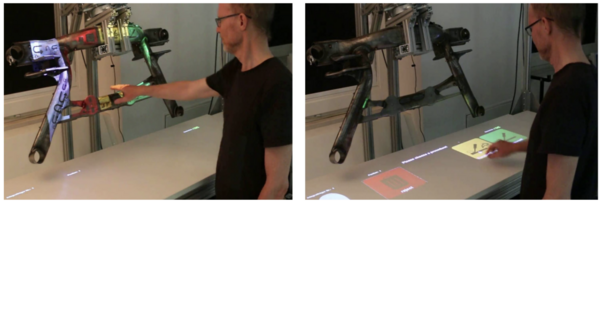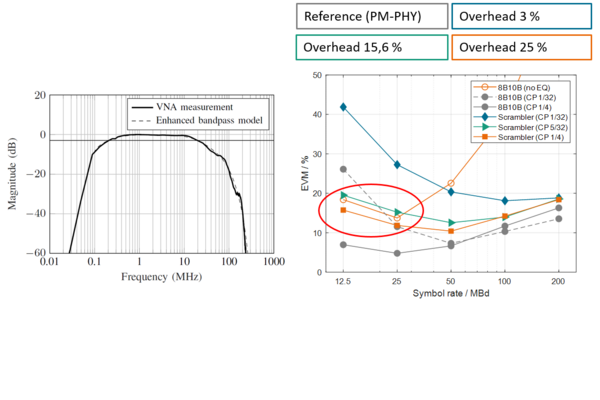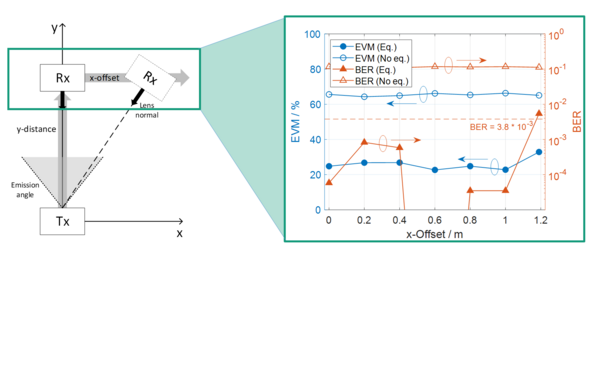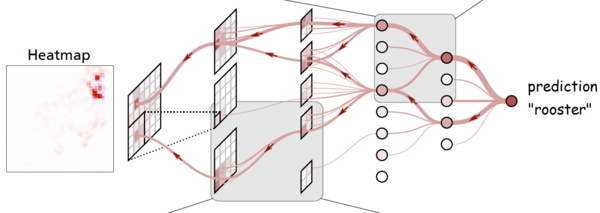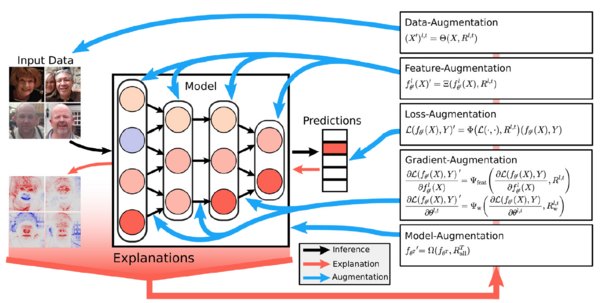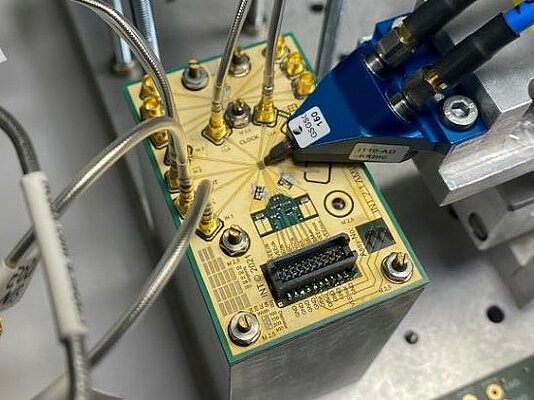Demonstration of Multi-Hop Mode-Group Routing in a Field-Deployed Multi-Mode Fiber Network
Researchers from Politecnico di Milano, NICT, Prysmian and University of L’Aquila show that Space-division multiplexing can enhance node flexibility in urban networks by exploiting routing of weakly coupled mode groups. They demonstrate multi-hop...
Partial MIMO-based Mode Division Multiplexing Transmission over the First Field-Deployed 15-Mode Fiber in Metro Scenario
Researchers from Politecnico di Milano, NICT, Prysmian and University of L’Aquila assess mode division multiplexing transmission based on partial MIMO equalization over 6.1 km of the first deployed 15-mode fiber. They demonstrate more than...
Guard-ring free InGaAs/InP single photon avalanche diodes for C-band quantum communication
We present a guard-ring free InGaAs/InP single photon avalanche diode with 20 µm diameter for the optical C-band. At 225 K, 25.6 µs dead time and 17% detection efficiency, the dark count rate is 3 kcps with 0.5% afterpulsing probability. This...
Superiorized Adaptive Projected Subgradient Method with Application to MIMO Detection
This paper establishes the bounded perturbation resilience of the adaptive projected subgradient method (APSM), a flexible convex optimization framework. Exploiting this property enables a vast variety of heuristic extensions of APSM-based...
Real-Time Sub-THz Link Enabled Purely by Optoelectronics: 90–310 GHz Seamless Operation
A photonics-enabled sub-THz wireless link operating in real-time settings, using a PIN-PD-based THz emitter, and a THz receiver based on an ultra-fast photoconductor is demonstrated. The real-time generation and detection of the information...
Colorless and Directionless ROADM for Meshed Coupled-Core Multicore Fiber Networks
Researchers from NICT, University of L’Aquila, Finisar and Sumitomo demonstrate the first meshed spatial-super-channel switching SDM network using field-deployed coupled-core multicore fibers with a 3 line-side, colorless, directionless ROADM....
Microwave Photonic ps-Pulse and 140 GHz RF Comb Generator
A microwave photonic RF comb generator is presented by combining an fs-pulse laser and a high-speed broadband photodetector module. The subsystem generates pulses with a FWHM of 5.8 ps and a flat RF comb up to 140 GHz. Furthermore, the...
Angle-Resolved THz Channel Measurements at 300 GHz in a Shopping Mall Scenario
This paper presents first results of channel measurements conducted at 300GHz in a shopping mall scenario. Angle-resolved channel impulse responses were analysed with regards to channel parameters. A novelty of this work is the channel parameter...
System for 3D Acquisition and 3D Reconstruction Using Structured Light for Sewer Line Inspection
We introduce an innovative system based on single-shot structured light modules that facilitates the detection and classification of spatial defects like jutting intrusions, spallings, or misaligned joints. This system creates highly accurate 3D...
MIMO Systems with Reconfigurable Antennas: Joint Channel Estimation and Mode Selection
In this paper, we develop a low-complexity iterative mode selection algorithm for data transmission in a Reconfigurable antennas (RAs) MIMO system. Furthermore, we study channel estimation of an RA multi-user MIMO system. We propose a mode...
Decentral and Incentivized Federated Learning Frameworks: A Systematic Literature Review
The advent of federated learning (FL) has sparked a new paradigm of parallel and confidential decentralized machine learning (ML) with the potential of utilizing the computational power of a vast number of Internet of Things (IoT), mobile, and...
Quantus: An Explainable AI Toolkit for Responsible Evaluation of Neural Network Explanations and Beyond
Explainability is supposed to strengthen trust in artificial intelligence, it is necessary to systematically review and compare explanation methods in order to confirm their correctness. We therefore built Quantus—a comprehensive, evaluation...
Enabling Optical Modulation Format Identification Using an Integrated Photonic Reservoir and a Digital Multiclass Classifier
We numerically show modulation format identification in the optical domain using Silicon-on-Insulator-based Photonic-Integrated-Circuit (PIC) reservoir. Identification of 32 GBd single-polarization signals of OOK, PAM4, BPSK and QPSK is...
Recovering Fine Details for Neural Implicit Surface Reconstruction
In this paper, we present D-NeuS, a volume rendering-based neural implicit surface reconstruction method capable to recover fine geometry details, which extends NeuS by two additional loss functions targeting enhanced reconstruction quality.
Ultrafast quantum key distribution using fully parallelized quantum channels
Quantum key distribution (QKD) offers secure communication protected by the laws of quantum mechanics. Aiming for an application-oriented solution, we designed a multichannel superconducting nanowire single photon detector system, as well as a...
Continuous intraoperative perfusion monitoring of free microvascular anastomosed fasciocutaneous flaps using remote photoplethysmography
Intraoperative monitoring of free flaps using remote photoplethysmography (rPPG) signal provides objective and reproducible data on tissue perfusion. We developed a monitoring algorithm for flap perfusion, which was evaluated in fifteen patients...
Investigating the Performance and Suitability of Neural Network Architectures for Nonlinearity Mitigation of Optical Signals
We compare three different neural network architectures for nonlinearity mitigation of 32 GBd OOK and QPSK signals after transmission over a dispersion-compensated link of 10-km SSMF and 10-km DCF. OSNR gains up to 2.2 dB were achieved using...
Experimental Study of In-line Nonlinearity Mitigation for a 400 Gb/s Dual-Carrier Superchannel with Joint Reception Using a Waveband-Shift-Free OPC
We experimentally study waveband-shift-free optical phase conjugation (OPC) of a 400-Gb/s dual-carrier superchannel and discuss the effectiveness of the OPC for multi-channel nonlinear mitigation. After joint reception of the 31.44 GBd-PDM-16QAM...
Ultra-Wideband All-optical Interband Wavelength Conversion Using a Low-complexity Dispersion-engineered SOI Waveguide
We experimentally present a low-complexity dispersion-engineered all-optical wavelength-converter using a photonic integrated-circuit based on SOI waveguide. We achieve a single-sided conversion bandwidth of ~35 nm from C- to S-band, and...
Increasing the reach of visible light communication links through constant-envelope OFDM signals
We demonstrate the transmission of constant-envelope orthogonal frequency division multiplexing (CE-OFDM) signals, based on electrical phase modulation, in a visible light communication (VLC) system. An increased tolerance to nonlinearity...
A Novel Approach for Joint Analytical and ML-assisted GSNR Estimation in Flexible Optical Network
We propose a novel approach to perform QoT estimation relying on joint exploitation of machine learning and analytical formula that offers accurate estimation when applied to scenarios with heterogeneous span profiles and sparsely occupied links....
Automated Dataset Generation for QoT Estimation in Coherent Optical Communication Systems
We demonstrate sophisticated laboratory automation and data pipeline capable of generating large, diverse, and high-quality public datasets. The demo covers the full workflow from setup reconfiguration to data monitoring and storage, represented...
Demonstration of a Real-Time ML Pipeline for Traffic Forecasting in AI-Assisted F5G Optical Access Networks
We showcase a proof-of-concept demonstration of a ML pipeline for real-time traffic forecasting deployed on a passive optical access network using an XGS-PON compatible telemetry framework. The demonstration reveals the benefits of fine-granular...
Toward AI-enhanced VLC Systems for Industrial Applications
This paper presents optimization and deep learning procedures aiming at increasing power and spectral efficiency of visible light communications systems for two exemplary industrial scenarios. We propose a hybrid multi-objective optimization to...
Comparison of Uni- and Multimodal Interfaces for Spatial Interaction
Multimodal user interfaces can provide better solutions, as they combine various interaction modalities to enable more flexibility and naturalness in human-machine interactions (HMI). They allow to seamlessly adapt to user and application...
Reducing Overhead for Low-Power Optical Wireless Communications
We demonstrate on-off-keying optical wireless transmissions according to the IEEE P802.15.13 PM-PHY, in which we replace 8b10b line-coding by guided and non-guided data scramblers and compensate the remaining high-pass distortions through a...
Demonstration of 1.75 Gbit/s VCSEL-Based Non-Directed Optical Wireless Communications With OOK and FDE
We evaluate a high power on-off-keying transmitter for non-directed optical wireless communications based on VCSEL-arrays. Error-free transmission after FEC with a net data rate of 1.75 GBit/s is achieved across a distance of 2.5 m with a...
Explaining the Decisions of Convolutional and Recurrent Neural Networks
In this chapter we discuss the algorithmic and theoretical underpinnings of layer-wise relevance propagation (LRP), apply the method to a complex model trained for the task of visual question answering (VQA), and demonstrate that it produces...
Beyond Explaining: Opportunities and Challenges of XAI-Based Model Improvement
Explainable Artificial Intelligence (XAI) is an emerging research field bringing transparency to highly complex and opaque machine learning (ML) models. This paper offers a comprehensive overview over techniques that apply XAI practically to...
150 GBd PAM-4 Electrical Signal Generation using SiGe-Based Analog Multiplexer Ic
Analog Multiplexers in Silicon-Germanium technology allow increasing the analog bandwidth of Digital-to-Analog-Converters and enable faster data transfers. We demonstrated 4-level pulse-amplitude modulation (PAM-4) signal transmission at 150 GBd...
